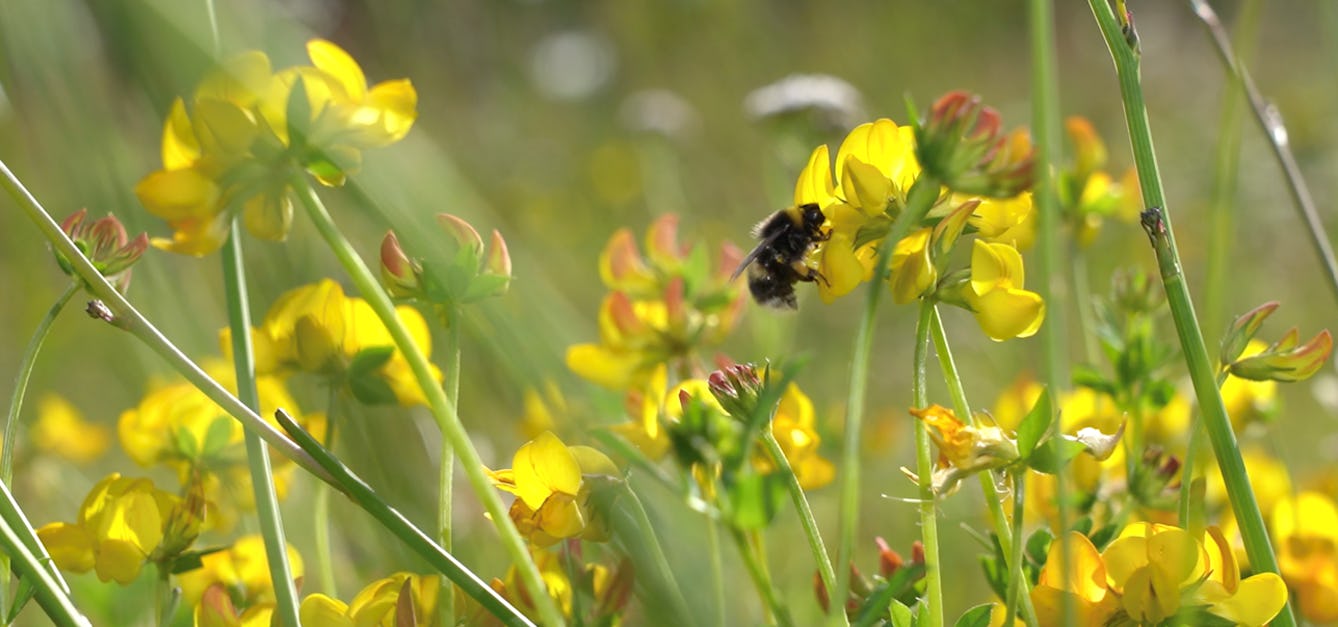Stories

- Article
How we bury our children
Following her baby daughter’s funeral, Wendy Pratt found that visiting the grave gave her a way to carry out physical acts of caring for her child. Here she considers how parents’ nurturing instincts live on after a child’s death.

- Book extract
What the wind can bring
In this extract from ‘This Book is a Plant’, Amanda Thomson shares a newfound fascination with flowers, and reveals why our relationship with plants can also be complicated.

- Article
Chillies and the trouble with Scoville
Measuring the heat of these peppers can leave you a little lukewarm.
Catalogue
- Books
- Online
The propagation and botanical arrangements of plants and trees, useful and ornamental, proper for cultivation in every department of gardening; nurseries, plantations and agriculture. Containing The fullest practical Directions for performing all the different Methods of Vegetable Propagation, by which the various Kinds of Plants, Trees, Flowers, Fruits, &c. are raised and increased in the greatest Abundance and Perfection: Now First thoroughly explained. With the Compleatest Botanical Arrangements of all the Species and Varieties of Plants, Trees, Shrubs, Flowers, Fruits, Herbs, Corns, Grasses, &c. proper for Cultivation in every District of Gardening, Nurseries, Plantations, Green-Houses, Hot-Houses, and in Fields, all ranged in their proper Genera or Families; with the Universal Botanic, Latin and English Names of the Genera and Species, &c. and in the greater Part, short specific Descriptions, mentioning also their native Places of Growth; the Whole according to the latest Modern Improvements of the Linnaean System; comprised in Eight Divisions, viz. I. Kitchen-Garden Plants. II. Fruit Trees. III. Forest and Ornamental Trees and Shrubs. IV. Herbaceous, Perennial, and Biennial Flower Plants, &c. V. Annual Flower Plants. VI. Green-House Plants. Vii. Hot-House Plants. Viii. Fields, or Agricultural Plants. The Whole forming a very necessary and useful Companion to all Gardeners, Nursery-Men, Florists, Botanists, Planters, Seeds-Men, Farmers, and every one concerned, either in the Cultivation, or Oeconomical Uses, &c. of the Vegetable Kingdom. By John Abercrombie, Author of Every Man his own Gardener. In two volumes. ...
Abercrombie, John, 1726-1806.Date: 1784- Books
- Online
The young gardener's best companion, for the thorough practical management of the pleasure ground and flower garden; shrubbery, nursery, tree plantations, and hedges; green-house and hot-house; with the most approved plans for the whole fully described: Also, the Proper Trees, Shrubs, Plants, and Flowers, and Methods of Propagation and Culture. The whole described under the following Divisions: Pleasure Ground, Shrubbery, Flower Garden, and all Ornamental Plantations; Trees, Shrubs, and Herbaceous, Perennial, Biennial, and Annual Flower Plants, Methods of Propagation in the Nursery, Order of final Planting and Culture, together with the thorough Management of the Pleasure Ground. Forest Tree Plantations, proper Trees, Methods of Raising them in the Nursery, Order of Planting, and general Management. Green-House, its requisite Form and Collection of Plants, their Propagation and Method of Culture. Hot-House, or Stove, its great Use in Gardening, Dimensions and Construction, with the Propagation and Culture of its Plants. The whole arranged in botanical Order, with all the modern Improvements, proper Seasons and Methods for performing the Work of each Department all the Year, and copious Directions, according to the most approved Methods now in Practice, necessary to form a Complete Gardener. By Samuel Fullmer, (horse-Ferry-Road, near Chelsea,) and other gardeners.
Fullmer, Samuel.Date: 1781
- Books
- Online
New and rare beautiful-leaved plants : containing illustrations and descriptions of the most ornamental-foliaged plants not hitherto noticed in any work on the subject / by Shirley Hibberd.
Date: 1870- Books
New and rare beautiful-leaved plants; : containing illustrations and descriptions of the most ornamental-foliaged plants not hitherto noticed in any work on the subject / by Shirley Hibberd, Esq.
Hibberd, Shirley, 1825-1890.Date: 1870- Books
- Online
The young gardener's best companion, For the thorough practical Management of the Pleasure Ground and Flower Garden; shrubbery, nursery, forest tree plantations, Green House and Hot House; With the most approved Plans for the whole fully described. Also the Proper Trees, Shrubs, Plants, and Flowers, Arranged in Botanical Order; Together with the Methods of Propagation and Culture, The whole displayed under the following Heads: Pleasure Ground, consisting of the Shrubbery, Flower Garden, and all Ornamental Plantations; with an Account of the Trees, Shrubs, and Flowers, proper for the same; Directions for their Propagation in the Nursery; and Instructions for the Transplanting of them to those Situations where they are intended to remain. Forest Tree Plantations, particularising the proper Trees, Methods of raising them in the Nursery, Order of Planting, and general Management. Green House, its requisite Form and Collection of Plants, their Propagation and Method of Culture. Hot House, or Stove, its great Use in Gardening, Dimensions and Construction, with the Propagation and Culture of Plants suitable to it. Comprising all the modern Improvements, according to the Methods now in Practice among the best Gardeners. By S. Fullmer and other gardeners. A new edition, corrected and improved with additions, by Alexander Hamilton, Formerly of his Majesty's Gardens, Hampton Court. To which is added, a complete monthly kalendar, describing All the Work necessary to be done in the Pleasure Ground and Flower Garden throughout the Year.
Fullmer, Samuel.Date: [1786]

![Trifolium rubens L. Leguminosae. [Note the Family Leguminosae is preferred over Family Fabaceae as the former allows all the legumes to be in one Family and not three - one Family being the current consensus among botanists]. Red Feather Clover. Distribution: Europe. The white clover, Trifolium repens, is listed as a treatment for arthritis by Linnaeus (1782). This and Trifolium pratense, Red Clover, are the ones most used for pastures. All the clovers have root nodules which fix nitrogen from the air into the soil so have an important role in ensuring soil fertility. Trifolium rubens has the same nitrogen fixing ability, and is used as an ornamental garden plant where it still acts to improve fertility. Photographed in the Medicinal Garden of the Royal College of Physicians, London.](https://iiif.wellcomecollection.org/image/B0009229/full/282%2C/0/default.jpg)







